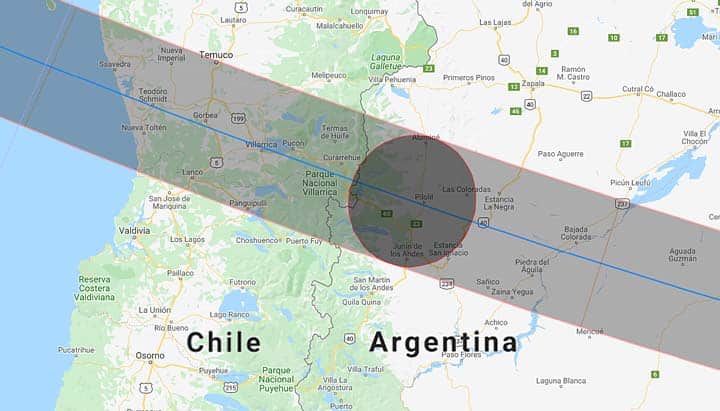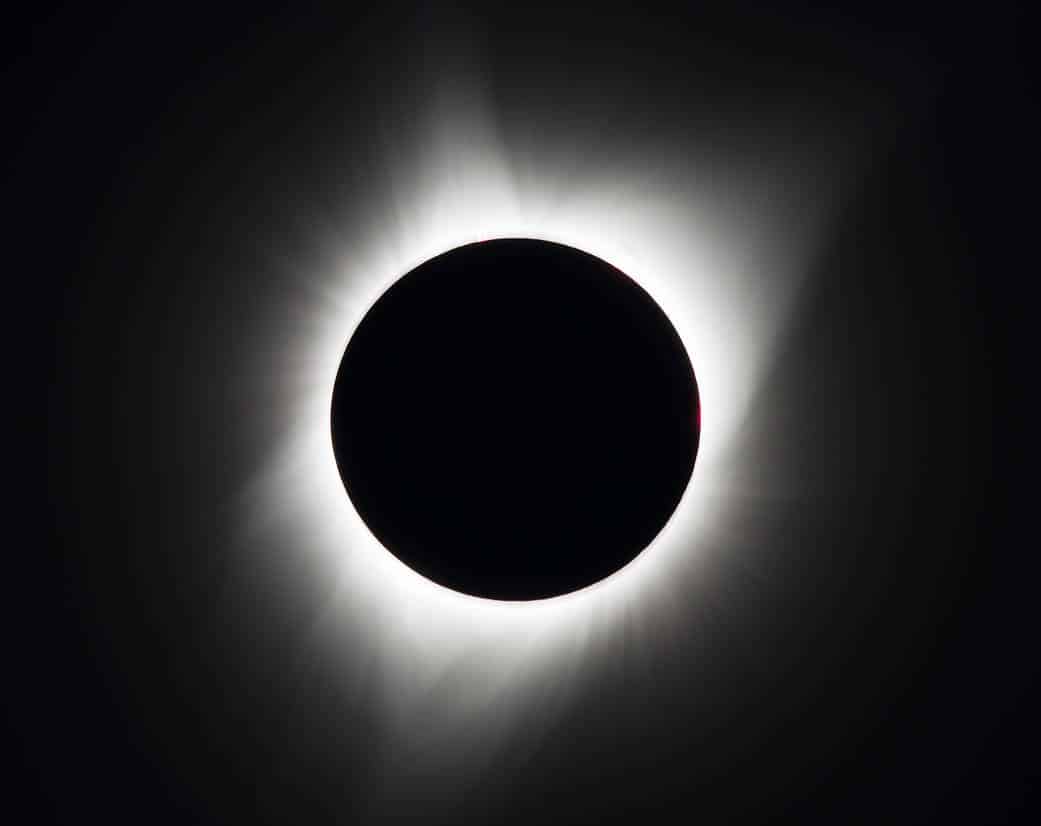The next solar eclipse of 2020 will occur on Monday, December 14 which will also be the eve of new moon day. As a matter of fact, not only this eclipse will be the total solar eclipse, it will also be the last eclipse of this calendar year.
Some sad news for eclipse aficionados!! WHAT?? Well, the next solar eclipse totality will be visible from some places, and, obviously, from some, it won’t!
But, before going into this, let me present you with a quick review of the meaning of the solar eclipse, especially the total eclipse of the sun. Keep Reading.
What is a Total Solar Eclipse?
According to the solar eclipse definition, a total solar eclipse will occur only and only when these principles are fulfilled.
- First, only on a new moon day, a solar eclipse can occur. Thankfully, December 14 is the day of a new moon.
- Second, the sun and the moon have to be completely in line with the earth.
- Third, and most importantly, the moon has to be at or near its lunar node. And, for that, the moon has to be at the closest distance from the earth i.e near its perigee. Why? Because when the moon is near its perigee, it will appear much large enough to completely cover the sun’s bright disk.
- Fourth, and equally important like the third one, the magnitude of the eclipse has to be greater than or equal to 1.
Note: Obviously, you would be thinking that if a solar eclipse (of any type) can only occur on a new moon day. Then why won’t we see a solar eclipse on every new moon? Well, there is a catch!
Just like the earth has an axial tilt with respect to the Sun’s orbital plane. In a similar way, the moon’s orbital path has an axial tilt of approximately 5° with respect to the earth’s orbital plane. That’s why we don’t see a solar eclipse on every new moon day.
And, if that was not the case, we would have seen a solar eclipse (of any type) on every new moon day. Well, not just the solar eclipse, we would have seen a lunar eclipse on every full moon day.
Must read, 8 Lunar Phases – From New Moon to Full Moon to New Moon
Other Types of Solar Eclipses
Generally, there are four types of Solar eclipses. What type of solar eclipse will occur is principally defined by the fact that how much of the sun’s bright disc is obscured by the moon. Not to mention, due to the demand for the topic, I can’t go deep in there. I will try to give a short review here.
However, you can check this article if you wanna know more about this astronomical phenomenon. As I have already explained the total eclipse of the sun phenomena, therefore, I will be skipping this one here.
Annular Solar Eclipse
An annular solar eclipse occurs when the moon is near its apogee. Additionally, for the annular solar eclipse to occur, the magnitude of the eclipse has to be less than 1.
Must Read, Full Moon Calendar 2021 (Dates, Names & Moon Sign – Northern Hemisphere)
Partial Solar Eclipse
The partial solar eclipse is the most commonly seen among them. Not to mention, in the case of this type of solar eclipse, there is no fixed value for the magnitude of the eclipse. Why? Because from place to place, it’s magnitude varies.
Hybrid Solar Eclipse
As the name suggests, this type of solar eclipse is a hybrid or combination of the annular and total lunar eclipse. In other words, at one location, the hybrid solar eclipse looks like a total solar eclipse. Conversely, at some other, it looks like an annular one. Not to mention, these types of astronomical phenomena are the rarest among all.
Check out, Full Moon Calendar 2021 (Dates, Names & Moon Sign – Southern Hemisphere)
Where to See the Next Total Solar Eclipse?

Just because of the fact that the earth is round when half of the planet is living in the daylight, at the same time, the other half is enjoying the night sky. Therefore, this eclipse of the sun will be visible only from some specific countries.
Visibility of the Total Solar Eclipse of December 14, 2020
The visibility of this exclusive total solar eclipse of December 14, 2020, will solely depend on the fact that where on this earth you reside. (Refer to the above image for proper understanding). The eclipse of the sun will be seen in some parts of South Africa, and the Pacific Ocean.
Not to mention, countries like Chile and parts of Argentina will find themselves in the path of totality below into darkness for approximately 2 minutes 9 seconds. Moreover, some countries in Southern South America, South-west Africa, and Antarctica could see a partial solar eclipse, of course, with God’s grace, if the weather permits.
Well, as far as my country i.e India is concerned, this won’t be visible to us. WHY? Because according to the Indian standard time, this astronomical phenomenon won’t occur during the daytime. Hence, won’t be visible to us.
Must read, Difference Between Solar and Lunar Eclipse (Tabular Form)
Frequently Asked Questions
1. How Often Do Solar Eclipses Occur?
Ans. An eclipse of the sun generally occurs somewhere between 2 to 5 times a year. Not to mention, as per the available records of the past 100 years, the earth experiences an average of 2.4 solar eclipses in a calendar year.
2. When was the last solar eclipse?
Ans. The last solar eclipse occurred on Sunday, June 21, 2020. It was the annular solar eclipse of the sun.
3. What phase is the moon in during a solar eclipse?
Ans. During a solar eclipse, a moon is always in the new moon phase.
That’s it for this post. If you like this article, share it if you like it, like it if you share it. You can also find us on Mix, Twitter, Pinterest, and Facebook.
You might also like:
- December Solstice: First Day of Winter in Northern Hemisphere
- Sun Facts – Top 6 Interesting Facts About The Sun
- Why Can’t We See The Dark Side of The Moon?
- Indeed, the moon is moving away from earth, BUT WHY?
- Hence, That’s How Was The Moon Formed…!!!
